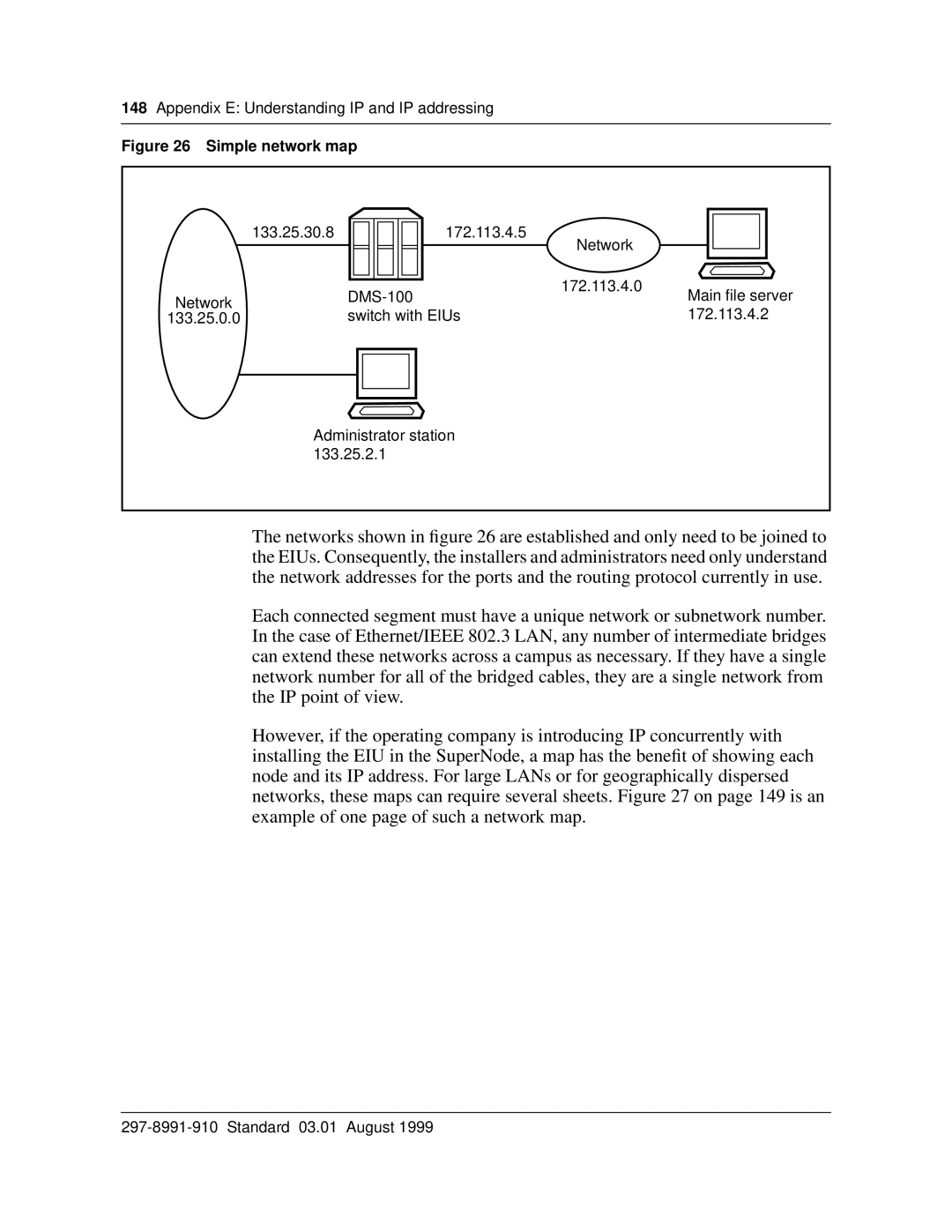
148Appendix E: Understanding IP and IP addressing
Figure 26 Simple network map
133.25.30.8 | 172.113.4.5 | Network |
|
|
|
| |
Network | 172.113.4.0 | Main file server | |
| |||
switch with EIUs |
| 172.113.4.2 | |
133.25.0.0 |
| ||
Administrator station |
|
| |
133.25.2.1 |
|
| |
The networks shown in figure 26 are established and only need to be joined to the EIUs. Consequently, the installers and administrators need only understand the network addresses for the ports and the routing protocol currently in use.
Each connected segment must have a unique network or subnetwork number. In the case of Ethernet/IEEE 802.3 LAN, any number of intermediate bridges can extend these networks across a campus as necessary. If they have a single network number for all of the bridged cables, they are a single network from the IP point of view.
However, if the operating company is introducing IP concurrently with installing the EIU in the SuperNode, a map has the benefit of showing each node and its IP address. For large LANs or for geographically dispersed networks, these maps can require several sheets. Figure 27 on page 149 is an example of one page of such a network map.
